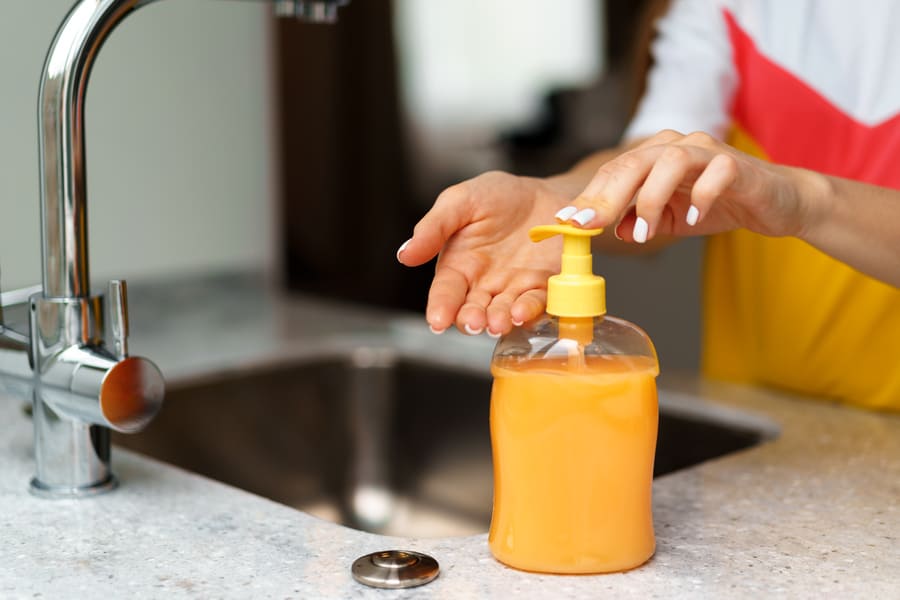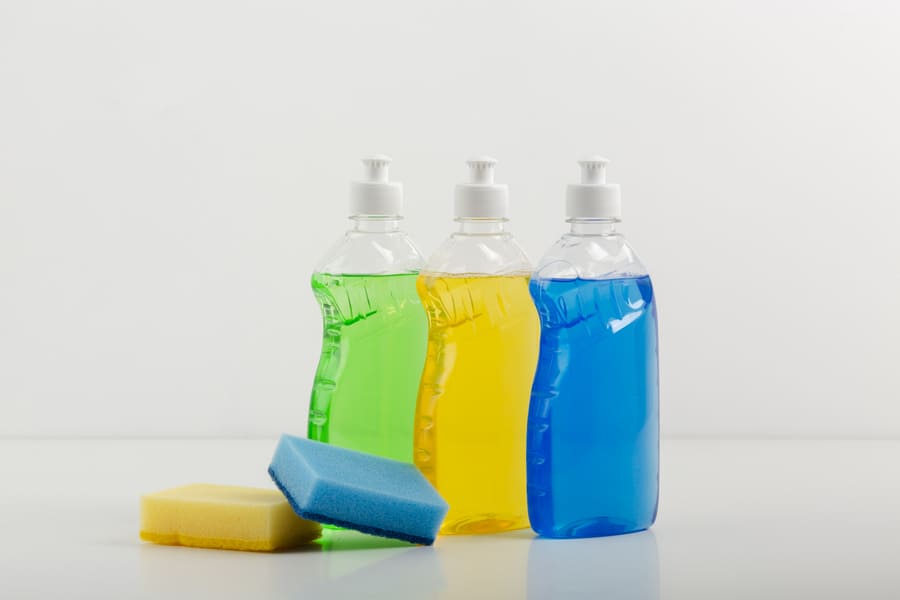There’s a bottle sitting on your kitchen sink right now. You’ve used it a thousand times to clean greasy pans and crusty plates, maybe without giving it much thought. But the surprise is this: that humble bottle of dish soap? It’s your cleaning cabinet’s Swiss Army knife versatile, low-key, and vastly underappreciated.
We tend to seek out specialized cleaners for each and every nook and cranny of the home, at a greater cost and cluttering our cabinets in the process. But what if one of the greatest cleaning products has been right in front of us all along?
Dish soap’s grease-cutting power and gentle formula give it secret superpowers, ones that can make your cleaning routine go from crazy to fabulous.
Let’s break down, go in the opposite direction, and perhaps even blow your mind a bit. Ready?
Learning Dish Soap

Imagine dish soap as a clever sponge with a chemistry degree. It is a surfactant cleaner, i.e., it lowers the surface tension of water and enables grime and grease to be swept away like magic’s disappearing trick.
It’s so wonderful because it’s so balanced: strong enough to remove sticky fats, but gentle enough to remove baby bottles. Thinned with water or vinegar or watered down with regular household products, dish soap is your do-it-yourself cleaning hero.
Now let’s let it loose.
1. Clean Makeup Brushes and Beauty Blenders
How it works: Oils, foundation, and bacteria build up fast on beauty products. Dish soap removes all that dirt from your brushes.
To clean them, add dish soap to warm water in a bowl. Put your sponges or brushes about in the water and wash until the water is clear. You’ll be amazed at what comes off. Ideal for: Ongoing re-treatments that leave your skin clear and your tools in tip-top shape.
Mind-blowing fact: Gritty makeup brushes can be dirtier than your toilet seat. Yep. Let that sink in.
2. Unclog a Toilet Naturally
Why it’s useful: Dish soap is the negotiator plumber type, it won’t push, it negotiates. Its slippery texture smothered over the clog, disintegrating it.
Steps: Pour ½ cup into the toilet bowl, allow it to sit for 10–15 minutes, and then pour in a kettle of boiling (not boiling!) water and flush.
Use when: You’d prefer to experiment with a no-hardware, no-embarrassment solution than reach for the plunger.
3. Shine Up Windows and Mirrors
What it does: Window sprays tend to leave a streaky residue. Dish soap dissolves fingerprints and dust without that dreaded haze.
How to use: Combine one drop in a spray bottle with water. Spray and wipe clean with a microfiber cloth.
Good for: Bathroom mirrors, sliding glass doors, and car windows.
Metaphor moment: Dish soap on Windows = noise-canceling headphones for your eyes clear, focused, no distractions.
4. Scrub Down Baseboards
Why it works: Dish soap gets the job done, cleaning without removing paint or leaving buildup.
How: Shake a handful of drops into warm water in a bucket. Clean scuff marks, dust, and pet hair with a cloth or sponge.
Best for: Spring cleaning, or when the in-laws are over and suddenly everything matters.
5. Clean Laundry Stains
What it targets: Dish soap is your go-to solution for fabric emergencies grease, sauce, makeup, even mystery stains.
How to use: Apply small quantity directly to stain, work in with fingers or a soft toothbrush, let sit 5–10 minutes, then wash normally.
Best for: Pre-treating clothes before washing day.
Pro tip: This is a complete game-saver on collars and underarm stains. Yellow shirts, goodbye.
6. Degrease Kitchen Appliances
Where to use: Food splatter’s favorite haunts are stove tops, microwaves, oven doors, even range hoods.
Steps: Mix dish soap with warm water, scrub with sponge or rag, and wipe with damp cloth.
When to use: You notice a sticky buildup forming. You know the type.
7. Disinfect Household Sinks
Why it works: You wash dirty hands, raw chicken, and more in your sink. That makes it one of the germiest household items.
How to use: Squirting dish soap directly into the basin, then scrubbing with a sponge or old toothbrush and rinsing well.
Good for: A low-fuss but high-effect nightly clean.
Fact: Your garbage disposal is not nearly as susceptible to bacteria as your kitchen sink. It could do better.
8. Clean Outdoor Patio Furniture
What it does: Dirt, mildew, pollen, even bird droppings.
Instructions: Soak the bucket in warm soapy water. Scrub over your furniture with the scrub brush, then hose down with the garden hose.
Use on: Plastic, wicker, or metal surfaces that need revitalizing.
A patio set, bubble bath candle-free.
9. Clean Your Car’s Wheels and Tires
How it works: Wheels catch brake dust and grime that adhere like glue. Dish soap zaps the adhesive in an instant.
How to use: Mix dish soap and water in a bucket. Scrub tires and rims with a sponge or brush, then rinse with a hose.
Best for: Keeping ants out of your vehicle in between full car washes.
10. Repel Ants at Points of Entry
How it works: Ants travel by crawling along scent trails. Dish soap dissolves and kills them immediately.
Steps: Mix a couple of drops with water in a spray bottle and spray on doorways, windows, and floorboards.
When to apply: The moment you notice that scout ant outsmarted the army to be first.
It’s like taking the GPS off of their map. They won’t know where they’re going.
Dish Soap Tricks for Maintenance
Storage: Keep it in a cool, dry place out of direct sunlight to maintain its power.
Mix whiz: Make minimal quantities of solutions to avoid waste and spoilage.
Be kind: Delicate cloths or sponges can be used on sensitive surfaces to avoid scratches.
Conclusion
Who knew one bottle was capable of doing all that? Dish soap is not just for plates but your behind-the-scenes hero for a cleaner, smoother-running home. From detailing your car to salvaging your makeup brushes and outsmarting ants, its uses are as convenient as they are unexpected.
So the next time you reach for that bottle to clean off a filthy pan, remember this: that little splash of liquid is a heavy hitter. Lean in. You’ve got a whole lot more cleaning mojo in your arsenal than you ever knew.

Numrah Fareed is a freelance writer and home organization enthusiast with a passion for practical, eco-friendly living. When not typing away at her desk, she’s experimenting with DIY cleaning hacks and helping readers simplify their routines one tip at a time.
